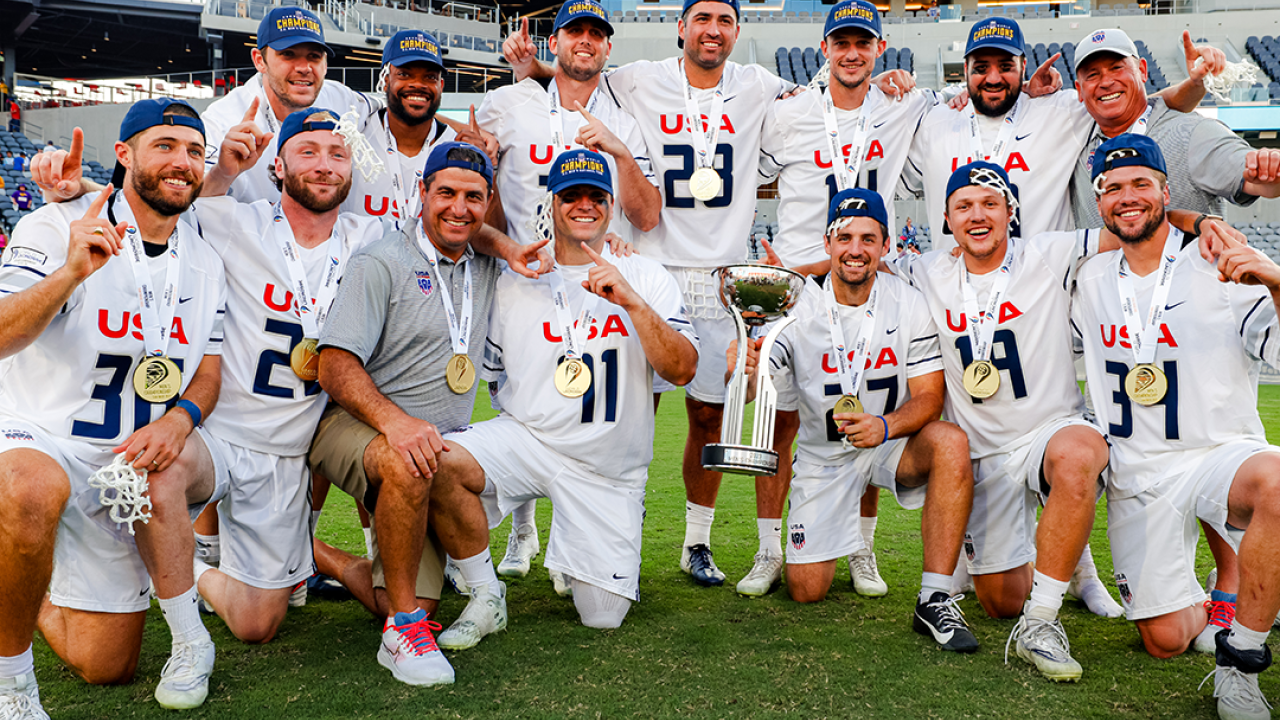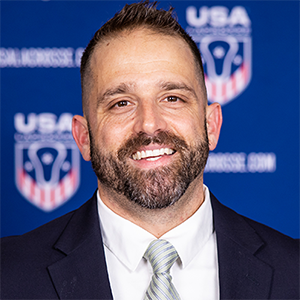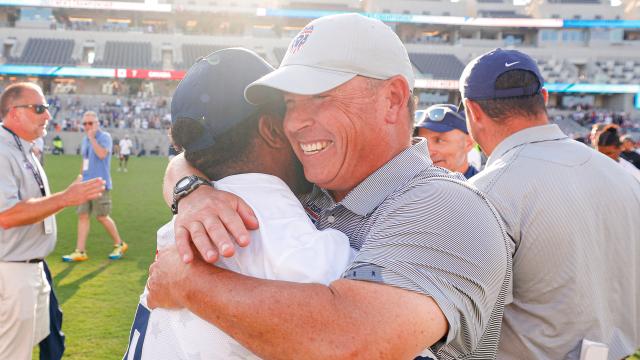
Gold Standards: 13 Fundamentals that Galvanized the U.S. Defense
This story appears in the current edition of USA Lacrosse Magazine. Join our momentum.
Before the World Lacrosse Men’s Championship in San Diego, the U.S. men’s national team’s defensive unit agreed to a set of core principles each of the 10 defenders and two goalies would sign — a contract that assistant coaches Joe Amplo and Charley Toomey laminated and affixed to their dorm room doors.
The result? Maybe the best defense ever played.
If that sounds hyperbolic, consider that of the 28 goals the U.S. allowed in seven games (team-record 4.0 goals per game), just 19 (or 2.7 GPG) were scored playing six-on-six in the box. Eighty-six of opponents’ 105 possessions resulted in defensive stops, a success rate of 81.9 percent (defensive efficiency 18.1 percent).
For a comparative reference, Lacrosse Reference founder Zack Capozzi compiled the defensive efficiencies of every NCAA Division I men’s lacrosse team from 2016-19 — the last four seasons before the shot clock, which does not exist in the international game — and assigned them to a scale where 100 was the average. Richmond’s 2017 season (78.8 percent success rate) topped the list with a 146 rating.
“Using the same scale,” Capozzi explained, “Team USA just put up a 171 rating.”
There was not a single weak link in the unit. Want to build an elite defense? Start with this foundation.
1. We are in great posture.
2. We approach with presence.
3. We connect off the ball.
4. We point our stick to the crease off ball.
5. We pick up first-time ground balls.
6. We make the easy first pass in the clear.
7. We keep the dodger going one way.
8. We slide to the top dodger.
9. We talk to the guy next to us.
10. We are on the same page, execute together.
11. We are always present in the moment.
12. We are brilliant in the basics.
13. We play harder than we ever have.
Matt DaSilva
Matt DaSilva is the editor in chief of USA Lacrosse Magazine. He played LSM at Sachem (N.Y.) and for the club team at Delaware. Somewhere on the dark web resides a GIF of him getting beat for the game-winning goal in the 2002 NCLL final.

Categories
Related Articles




